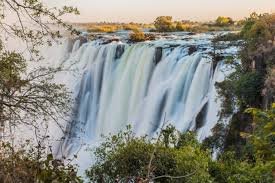Torres del Paine National Park: A Wild Paradise in the Heart of Patagonia
Located in the remote southern region of Chilean Patagonia, Torres del Paine National Park is one of the most breathtaking natural destinations in the world. With its dramatic granite peaks, turquoise lakes, ancient glaciers, and vast grasslands teeming with wildlife, this park is a dream come true for adventurers, photographers, and nature lovers alike.
Whether you’re hiking along the famous W trek or simply admiring the view of the iconic towers, Torres del Paine offers a once-in-a-lifetime experience that immerses visitors in the raw beauty of nature.
A Glimpse Into the Heart of Patagonia
Torres del Paine (pronounced “Tor-res del Pie-nay”) was established as a national park in 1959 and later designated a UNESCO Biosphere Reserve in 1978. The name of the park comes from the three distinctive granite spires or “towers” (Torres) that rise sharply from the Patagonian landscape. These towers are flanked by glaciers, rivers, lakes, and sprawling valleys, forming a unique natural environment that stretches across more than 1,800 square kilometers.
The park lies between the Andes Mountains and the Patagonian steppe, creating a diverse climate and ecosystem. From windswept plains to lush forests, every part of Torres del Paine offers something special.
Iconic Landscapes and Natural Wonders
One of the park’s most recognized features is the Torres del Paine, three steep, jagged granite peaks rising over 2,800 meters. But that’s only the beginning. The park is filled with scenic wonders, including:
- Lago Pehoé: A bright blue lake with mirror-like reflections of snow-covered mountains.
- Glacier Grey: Part of the massive Southern Patagonian Ice Field, this glacier is a stunning sheet of blue-white ice flowing into Lago Grey.
- Cuernos del Paine: These “Horns of Paine” are another dramatic mountain formation with dark caps and lighter granite bases.
- Salto Grande: A powerful waterfall connecting Lago Nordenskjöld and Lago Pehoé.
Each of these natural elements combines to create an almost surreal landscape — wild, untouched, and awe-inspiring.
Hiking and Adventure Trails
Hiking is the most popular activity in Torres del Paine, and the park offers options for all skill levels.
The W Trek
The W Trek is the most famous multi-day hiking route in the park. Lasting about 4 to 5 days, it forms a “W” shape on the map and covers the major highlights: the Base of the Towers, the French Valley, and Glacier Grey. Each day brings different terrains, including river crossings, forests, rocky climbs, and open grasslands.
The O Circuit
For more experienced hikers, the O Circuit is a full loop around the park that takes about 7 to 10 days. This route is more remote and offers fewer crowds, plus access to the back side of the park with amazing glacier views.
Day Hikes
If you’re short on time, Torres del Paine also offers plenty of incredible day hikes, including:
- Base of the Towers Hike – A challenging but rewarding trail ending at the base of the iconic granite towers.
- Mirador Cuernos – An easier hike with fantastic views of the Cuernos peaks and Lago Nordenskjöld.
Wildlife and Flora
Torres del Paine is not just about landscapes—it’s a haven for wildlife. The park is home to more than 100 species of birds and over 25 species of mammals.
You may spot:
- Guanacos – Wild relatives of llamas, often seen grazing in herds.
- Andean Condors – Among the largest flying birds in the world, soaring above cliffs.
- Pumas (Mountain Lions) – Rare, but sightings have increased due to conservation efforts.
- Foxes, rheas, flamingos, and armadillos – All part of this diverse ecosystem.
The plant life is equally impressive, with shrubs, mosses, forests of lenga beech trees, and wildflowers that bloom vibrantly in spring and summer.
Best Time to Visit
The best time to visit Torres del Paine depends on what you’re looking for:
- Summer (December to March): Warmest weather and longest daylight hours—ideal for hiking.
- Spring (October to November): Fewer crowds, wildflowers blooming, active wildlife.
- Fall (April to May): Stunning autumn colors and good visibility.
- Winter (June to August): Snowy landscapes, very few visitors, and peaceful solitude—but limited access and extreme cold.
Keep in mind that Patagonian weather is unpredictable. Winds can be extremely strong, and it’s not uncommon to experience sun, rain, and snow in a single day.
Getting There
Torres del Paine is most easily accessed from Puerto Natales, a small town located about 2 hours away by road. You can reach Puerto Natales by bus or plane via Punta Arenas, the nearest major city with an airport. From there, daily buses and tours operate into the park.
Accommodations in and near the park range from luxury eco-lodges and refugios (mountain huts) to campsites. Booking in advance is essential during peak season.
Conservation and Sustainability
Due to rising tourism, conservation has become a critical concern in Torres del Paine. Park authorities and local organizations are working hard to manage foot traffic, reduce pollution, and protect endangered species. Visitors are encouraged to follow the “Leave No Trace” principles, respect wildlife, and stay on marked trails.
In recent years, eco-tourism has grown, with eco-lodges offering sustainable accommodations that use solar power, composting toilets, and locally sourced materials.
Why Torres del Paine Belongs on Every Nature Lover’s Bucket List
Torres del Paine isn’t just a destination; it’s an experience that transforms you. The sheer scale of nature, the silence of the wind-carved valleys, and the sight of towering granite spires piercing the sky leave a deep impression on every visitor.
Whether you’re hiking the rugged trails, watching a condor in flight, or simply gazing at the mirror-like waters of Lago Pehoé, you’ll feel a profound connection to the natural world.
It’s a place where time slows down, where beauty is raw and unfiltered, and where every step offers a new perspective on Earth’s majestic wilderness.


